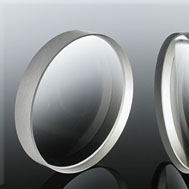Myopia is derived from the term "muopia" which, in Greek, means to close the eyes. It manifests itself as blurred distance vision, hence the popular term "short or near-sightedness." Clear distance vision is usually restored with minus power (concave) spectacle or contact lenses or corneal modification procedures in which corneal refractive power is decreased.
Myopia is the refractive anomaly of the eye in which the conjugate focus of the retina is at some finite point in front of the eye when the eye is not accommodating. It can also be described as the refractive condition in which parallel light rays from an object at optical infinity are focused by the eye in front or short of the retina, in a relaxed state of accommodation.
Signs and symptoms
The most common symptom associated with uncorrected myopia is blurred distance vision. In simple myopia and degenerative myopia, the distance blur is constant. In nocturnal myopia, distance vision is blurred only in dim illumination or in dark conditions.
Children with simple myopia are often unaware that they have reduced distance vision until they discover that other children see better than they can. For example, many school children first notice that they cannot read the chalkboard as well as their classmates. For others who never report a problem, poor distance vision is first detected during vision screening or comprehensive eye and vision examination. The primary sign of myopia is reduced unaided distance visual acuity, which can be corrected to standard or near-standard levels with the appropriate minus power optical correction.
Detection and Prevention

Myopia or short-sightedness
Reduced unaided distance visual acuity is a possible indication of myopia, particularly when unaided near visual acuity is normal or better than unaided distance acuity. Myopia can be detected by visual acuity testing, retinoscopy, autorefraction, or photorefraction during vision screening or clinical examination.
There is no universally accepted method of preventing myopia. However, some clinicians identify nearpoint vision stress as a possible contributor to the development of simple myopia. When presented with signs of nearpoint vision stress, such as distance blur, poor accommodative facility, and refraction at about plano (zero lens strength is required for clear distance vision), some clinicians recommend regimens such as the following:
Plus power lenses in single-vision or bifocal form for reading and near work
Vision therapy or orthoptics to eliminate deficiencies in accommodation and vergence function Further research into the risk factors relating to incipient myopia is needed to clarify and support these clinical interventions.
Stats and causes
The prevalence of myopia varies with age and other factors. When examined without the aid of cycloplegic agents, a significant number of infants are found to have some degree of myopia. Their myopia tends to decrease, and most such infants reach emmetropia by 2-3 years of age. The prevalence of myopia is high in premature infants.
Myopia of at least 0.50 D has a lower prevalence (< 5%) in the 5-year old population than in any other age group. The prevalence of myopia increases in school-age and young adult cohorts, reaching 20-25 percent in the mid to late teenage population and 25-35 percent in young adults in the United States and developed countries. The prevalence of myopia increases with income level, high reading test scores, educational attainment and is more common among persons who work in occupations requiring a great deal of near work.
An important risk factor for the development of simple myopia is a family history of myopia. Studies have shown a 33-60% prevalence of myopia in children whose parents both have myopia. In children who have one parent with myopia, the prevalence was 23-40%. Most studies found that when neither parent has myopia, only 6-15% of the children were myopic.
Treatment

Minus (concave) lenses
The goals for management of the patient with myopia are clear, comfortable, efficient binocular vision and good ocular health. The primary symptom in patients with low and moderate myopia is lack of clear vision at distance, which can be restored by optical correction. Treatment directed to slowing the progression of myopia is referred to as "myopia control". Effective myopia control results in less severe myopia and less vitreous chamber elongation than would otherwise have occurred.
Optical correction in the form of spectacles or contact lenses provides clear distance vision. Whether spectacles or contact lenses are preferable in a given case depends upon numerous factors, including patient age, motivation for wearing contact lenses, compliance with contact lens care procedures, corneal physiology, and financial considerations. It is the optometrist's responsibility to advise and counsel the patient regarding the optical correction options available and to guide the patient in the selection of the appropriate spectacles and/or contact lenses.


